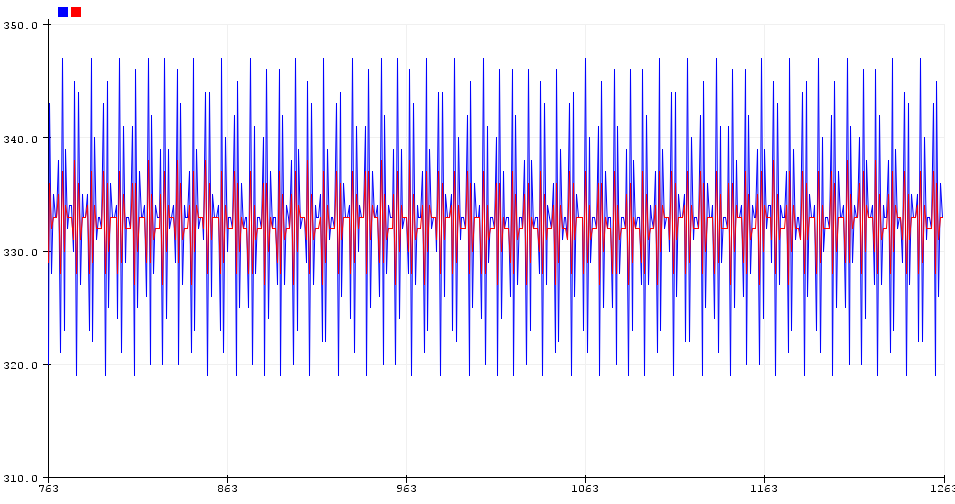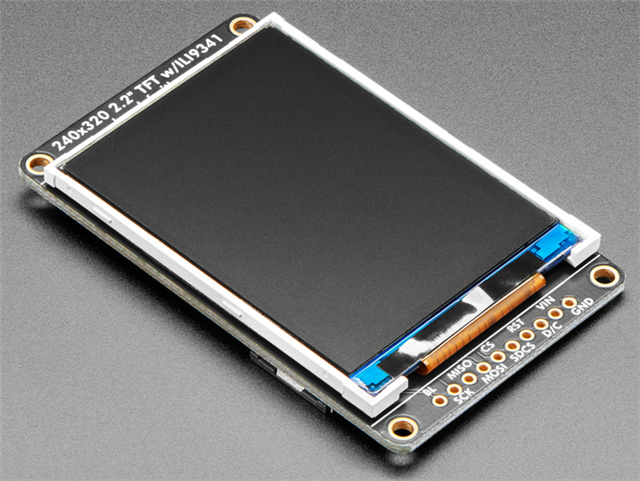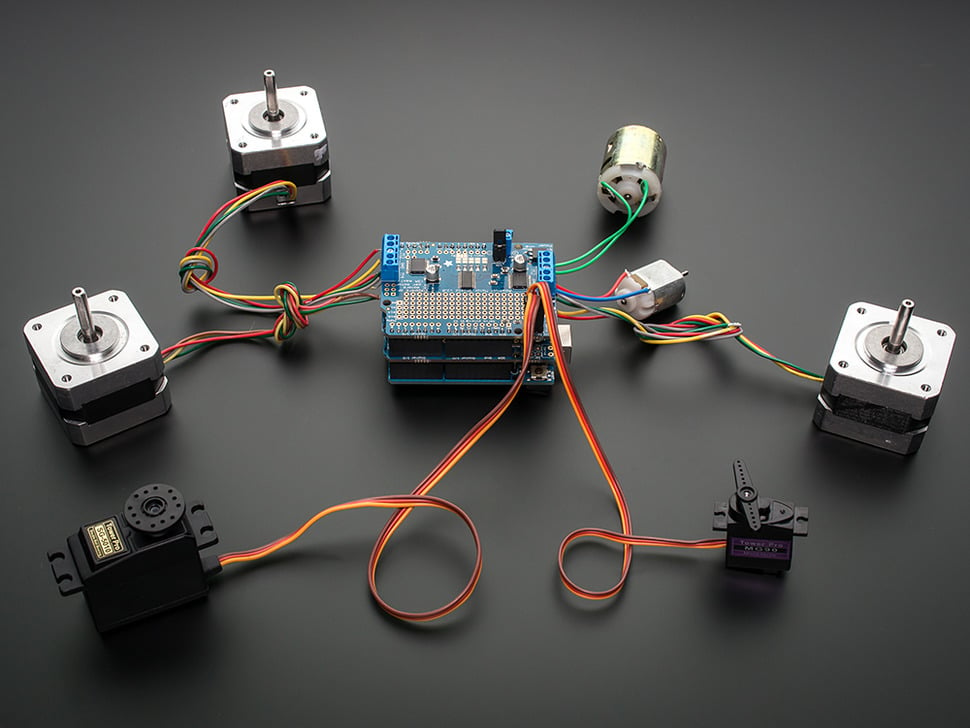Arduino + MQ-6 LPG gas sensor
The MQ-6 gas sensor measures concentrations of liquefied petroleum gas (LPG). LPG is composed mostly of propane and butane.
Background
See link at http://www.savvymicrocontrollersolutions.com/index.php?sensor=mq-6-gas-sensors for information on calculations and equations within the Arduino sketch file.
See link at http://www.savvymicrocontrollersolutions.com/index.php?sensor=mq-gas-sensors for general information about the MQ line of gas sensors and how to make connections to them.
The Code
/*
MQ-6 LPG (propane, butane) Gas Sensor
Sensor must be 'burned-in' for 24 hours prior to general use.
After burn-in, regular use of the sensor consists of
calibration in air without the presence of LPG.
Therafter, the sensor needs to be warmed for 30 sec
prior to taking a reading.
This sketch checks for the presense of LPG constantly.
(Note that if you only check say every 5 minutes, then you
may miss in incident). A total of 500 samples are measured
from the sample and then the average is used. This sampling
takes approximately 500 ms to complete.
If the LPG threshold of 2000 ppm is exceeded, an alarm condition is
set and it persists until the device is reset.
The lower explosive limit for LPG is 1900 ppm for butane, and
2000 ppm for propane. Human asphyxia occurs at 19000 ppm.
The MQ-6 sensor heater is constantly on. This heater consume a
about 150 mA of current.
Green LED = steady on. Power on
Green LED = fast blink. Warming up MQ-6 sensor
Red LED = on 5 sec + buzzer chirp. DHT11 sensor error.
Red LED = steady on + buzzer = LPG concentration exceeded !
Resources:
A0 gas sensor signal
DIO2 green LED.
DIO3 buzzer
DIO4 red LED.
DIO5 DHT11 temperature / humidity sensor.
DIO7 NPN transistor to turn on MQ-6 (disabled)
*** Note that with no sensor output, A14 = 1300 mV and
RsRo at 20C 65% RH comes to 2.17 or 162 ppm LPG.
Therefore, nothing detected even when sensor is not working.
*/
byte pinGreenLED = 2;
byte pinBuzzer = 3;
byte pinRedLED = 4;
byte pinNPN = 7;
byte pinMQ = A0;
boolean alarmLPG = false;
// The lower explosive limit for LPG is 1900 ppm for butane, and
// 2000 ppm for propane.
const unsigned int LPG_threshold = 1900;
// Adjust vRef to be the true supply voltage in mV.
float vRef = 5000.0;
float RL = 20.0; // load resistor value in k ohms
float Ro = 10.0; // default value 10 k ohms. Revised during calibration.
const float Ro_clean_air_factor = 10.0;
////////////////////////////////////////////////////////////////////////
// DHT11 humidity/temperature sensor
#include "DHT.h"
const unsigned int pinDHT = 5;
boolean errDHT11 = false;
// Uncomment whatever type you're using!
#define DHTTYPE DHT11 // DHT 11
//#define DHTTYPE DHT22 // DHT 22 (AM2302)
//#define DHTTYPE DHT21 // DHT 21 (AM2301)
DHT dht(pinDHT, DHTTYPE);
////////////////////////////////////////////////////////////////////////
// With sensor holes facing you:
// Connect pin 1 (on the left) of the sensor to +5V
// Connect pin 2 of the sensor to whatever your DHTPIN is
// Connect pin 4 (on the right) of the sensor to GROUND
// Connect a 10K resistor from pin 2 (data) to pin 1 (power) of the sensor
float mV = 0.0;
unsigned long samples = 0;
const int maxSamples = 500;
void setup() {
// DEFAULT: analog reference of 5 volts on 5V Arduino boards
analogReference(DEFAULT);
delay(1);
pinMode(pinMQ, INPUT);
delay(1);
pinMode(pinGreenLED, OUTPUT);
delay(1);
pinMode(pinRedLED, OUTPUT);
delay(1);
pinMode(pinBuzzer, OUTPUT);
delay(1);
pinMode(pinNPN, OUTPUT);
delay(1);
Serial.begin(9600);
delay(5000);
Serial.print("DHT");
Serial.print(DHTTYPE);
Serial.println(" setup");
dht.begin();
// Get the ambient conditions (deg C & relative humidity) from DHT11
float ambRH = dht.readHumidity();
float ambTemp = dht.readTemperature();
Serial.println(" ");
// check if returns are valid, if they are NaN (not a number) then something went wrong!
if (isnan(ambTemp) || isnan(ambRH)) {
Serial.println("Failed to read from DHT");
Serial.println(" ");
errDHT11 = true;
digitalWrite(pinRedLED, HIGH);
digitalWrite(pinBuzzer, HIGH);
delay(100);
digitalWrite(pinBuzzer, LOW);
delay(5000);
digitalWrite(pinRedLED, LOW);
} else {
// DHT11 ok, .. proceed.
Serial.print("ambTemp = ");
Serial.print(ambTemp);
Serial.println(" deg C");
Serial.print("ambRH = ");
Serial.print(ambRH);
Serial.println("% ");
}
Serial.println(" ");
Serial.println("Calibrating MQ-6 LPG sensor in clean air..");
Serial.println(" 30 sec warmup..");
digitalWrite(pinNPN, HIGH);
for(int i = 100; i > 0; i--){
blinkLED(pinGreenLED);
}
Serial.println(" 30 sec warmup complete");
// take a reading..
for(int i = 30; i > 0; i--){
blinkLED(pinGreenLED);
mV += Get_mVfromADC(pinMQ);
samples += 1;
}
mV = mV / (float) samples;
Serial.print(" avg A");
Serial.print(pinMQ);
Serial.print(" for ");
Serial.print(samples);
Serial.print(" samples = ");
Serial.print(mV);
Serial.println(" mV");
Serial.print(" Rs = ");
Serial.println(CalcRsFromVo(mV));
// Conv output to Ro
// Ro = calibration factor for measurement in clean air.
// Ro = ((vRef - mV) * RL) / (mV * Ro_clean_air_factor);
// Hereafter, measure the sensor output, convert to Rs, and
// then calculate Rs/Ro using: Rs = ((Vc-Vo)*RL) / Vo
Ro = CalcRsFromVo(mV) / Ro_clean_air_factor;
Serial.print(" Ro = ");
Serial.println(Ro);
Serial.println("Sensor calibration in clean air complete");
Serial.println("Setup complete. Constantly monitoring for LPG..");
Serial.println(" ");
digitalWrite(pinNPN, HIGH);
samples = 0;
mV = 0.0;
}
void loop() {
if (samples < maxSamples) {
mV += Get_mVfromADC(pinMQ);
samples += 1;
} else {
mV = mV / (float) samples;
Serial.print(" avg A");
Serial.print(pinMQ);
Serial.print(" for ");
Serial.print(samples);
Serial.print(" samples = ");
Serial.print(mV);
Serial.println(" mV");
// Conv output to Ro
// Calculate Rs from the measured sensor voltage output
// using: Rs = (Vc-Vo)* (RL / Vo)
//float Rs = (vRef - mV) * (RL / mV);
float Rs = CalcRsFromVo(mV);
Serial.print("Rs = ");
Serial.println(Rs);
// Calculate Rs/Ro
float RsRo_atAmb = Rs / Ro;
// Get the ambient conditions (deg C & relative humidity) from DHT11
float ambRH = dht.readHumidity();
float ambTemp = dht.readTemperature();
// check if returns are valid, if they are NaN (not a number) then something went wrong!
if (isnan(ambTemp) || isnan(ambRH)) {
Serial.println("Failed to read from DHT");
errDHT11 = true;
digitalWrite(pinNPN, LOW);
} else {
// DHT11 ok, .. proceed.
errDHT11 = false;
Serial.print("RsRo @ ambient = ");
Serial.print(RsRo_atAmb);
Serial.print("; ambTemp = ");
Serial.print(ambTemp);
Serial.print("; ambRH = ");
Serial.print(ambRH);
Serial.println("% ");
float measured_RsRo_at_20C65RH = RsRoAtAmbientTo20C65RH(RsRo_atAmb, ambTemp, ambRH);
Serial.print("measured_RsRo_at_20C65RH = ");
Serial.println(measured_RsRo_at_20C65RH);
// Calc the measured Rs/Ro (corrected to std 20C and 65% RH) in LPG
// concentration (ppm).
Serial.print("LPG pm = ");
unsigned int LPG_ppm = GetLpgPpmForRatioRsRo(measured_RsRo_at_20C65RH);
Serial.println(LPG_ppm);
Serial.println(" ");
digitalWrite(pinNPN, LOW);
if (LPG_ppm > LPG_threshold) {
alarmLPG = true;
} else {
alarmLPG = false;
}
}
samples = 0;
mV = 0.0;
}
if (alarmLPG == true) {
digitalWrite(pinRedLED, HIGH);
digitalWrite(pinBuzzer, HIGH);
}
if (errDHT11 == true) {
digitalWrite(pinRedLED, HIGH);
digitalWrite(pinBuzzer, HIGH);
delay(100);
digitalWrite(pinBuzzer, LOW);
delay(5000);
digitalWrite(pinRedLED, LOW);
}
}
float RsRoAtAmbientTo20C65RH(float RsRo_atAmb, float ambTemp, float ambRH) {
// Using the datasheet for MQ-6 sensor, derive Rs/Ro values
// from - 10 to 50 C and 33, 65, and 85 % relative humidity.
// For the measured Rs/Ro, use linear interpolation to calculate the
// standard Rs/Ro values for the measured ambient temperature and RH.
// Next, calculate a correction factor from the standard Rs/Ro at ambient
// temp and RH relative to standard Rs/Ro at 20C and 65 RH.
// Apply this correction factor to the measured Rs/Ro value and return the
// corrected value. This corrected value may then be used against the Rs/Ro
// Rs/Ro vs LPG concentration (ppm) chart to estimate the concentration of PPG.
// Calc RsRo values at ambTemp & 33% RH, 65% and 85% RH
float RsRo_at_ambTemp_33RH = -0.00000321 * pow(ambTemp, 3) + 0.000315 * pow(ambTemp, 2) - 0.0129 * ambTemp + 1.1568;
float RsRo_at_ambTemp_85RH = -0.00000358 * pow(ambTemp, 3) + 0.000298 * pow(ambTemp, 2) - 0.0102 * ambTemp + 0.9642;
//float RsRo_at_65RH = ((65.0-33.0)/(85.0-65.0));
float RsRo_at_ambTemp_65RH = ((65.0-33.0)/(85.0-33.0)*(RsRo_at_ambTemp_85RH-RsRo_at_ambTemp_33RH)+RsRo_at_ambTemp_33RH)*1.102;
// Linear interpolate to get the RsRo at the ambient RH value (ambRH).
float RsRo_at_ambTemp_ambRH;
if (ambRH < 65.0) {
RsRo_at_ambTemp_ambRH = (ambRH - 33.0)/(65.0 - 33.0)*(RsRo_at_ambTemp_65RH - RsRo_at_ambTemp_33RH) + RsRo_at_ambTemp_33RH;
} else {
// ambRH > 65.0
RsRo_at_ambTemp_ambRH = (ambRH - 65.0)/(85.0 - 65.0)*(RsRo_at_ambTemp_85RH - RsRo_at_ambTemp_65RH) + RsRo_at_ambTemp_65RH;
}
// Calc the correction factor to bring RsRo at ambient temp & RH to 20 C and 65% RH.
const float refRsRo_at_20C65RH = 1.00;
float RsRoCorrPct = 1 + (refRsRo_at_20C65RH - RsRo_at_ambTemp_ambRH)/refRsRo_at_20C65RH;
// Calculate what the measured RsRo at ambient conditions would be corrected to the
// conditions for 20 C and 65% RH.
float measured_RsRo_at_20C65RH = RsRoCorrPct * RsRo_atAmb;
return measured_RsRo_at_20C65RH;
}
float CalcRsFromVo(float Vo) {
// Vo = sensor output voltage in mV.
// VRef = supply voltage, 5000 mV
// RL = load resistor in k ohms
// The equation Rs = (Vc - Vo)*(RL/Vo)
// is derived from the voltage divider
// principle: Vo = RL * Vc (Rs + RL)
//
// Note. Alternatively you could calc
// Rs from ADC value using
// Rs = RL * (1024 - ADC) / ADC
float Rs = (vRef - Vo) * (RL / Vo);
return Rs;
}
unsigned int GetLpgPpmForRatioRsRo(float RsRo_ratio) {
// If you extract the data points from the LPG concentration
// versus Rs/Ro chart in the datasheet, plot the points,
// fit a polynomial curve to the points, you come up with the equation
// for the curve of: Rs/Ro = 18.446 * (LPG ppm) ^ -0.421
// This equation is valid for ambient conditions of 20 C and 65% RH.
// Solving for the concentration of LPG you get:
// LPG ppm = [(Rs/Ro)/18.446]^(1/-0.421)
float ppm;
ppm = pow((RsRo_ratio/18.446), (1/-0.421));
return (unsigned int) ppm;
}
float Get_mVfromADC(byte AnalogPin) {
// read the value from the sensor:
int ADCval = analogRead(AnalogPin);
// It takes about 100 microseconds (0.0001 s) to read an analog input
delay(1);
// Voltage at pin in milliVolts = (reading from ADC) * (5000/1024)
float mV = ADCval * (vRef / 1024.0);
return mV;
}
void blinkLED(byte ledPIN){
// consumes 300 ms.
for(int i = 5; i > 0; i--){
digitalWrite(ledPIN, HIGH);
delay(30);
digitalWrite(ledPIN, LOW);
delay(30);
}
}
Do you need help developing or customizing a IoT product for your needs? Send me an email requesting a free one hour phone / web share consultation.
The information presented on this website is for the author's use only. Use of this information by anyone other than the author is offered as guidelines and non-professional advice only. No liability is assumed by the author or this web site.


















